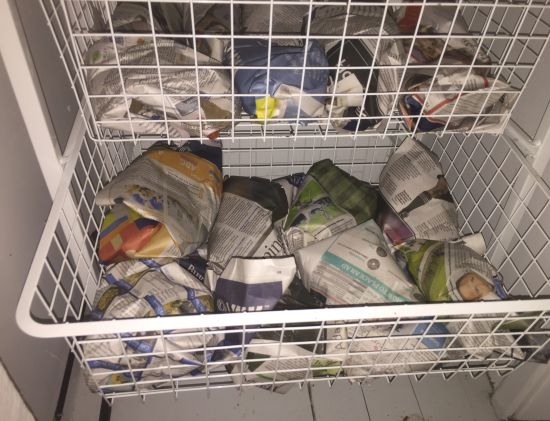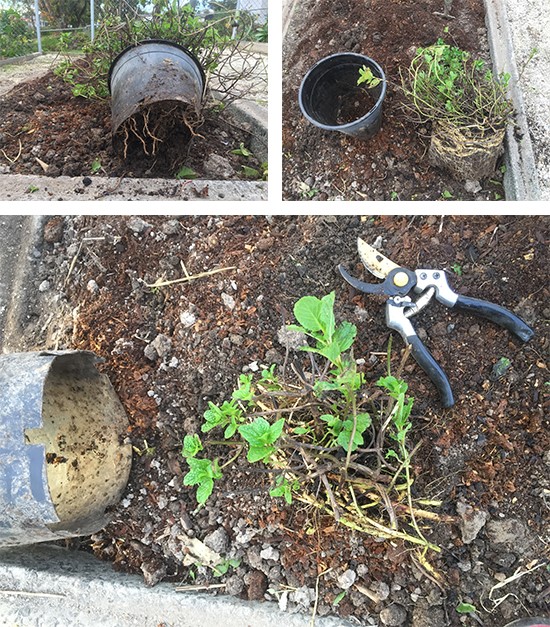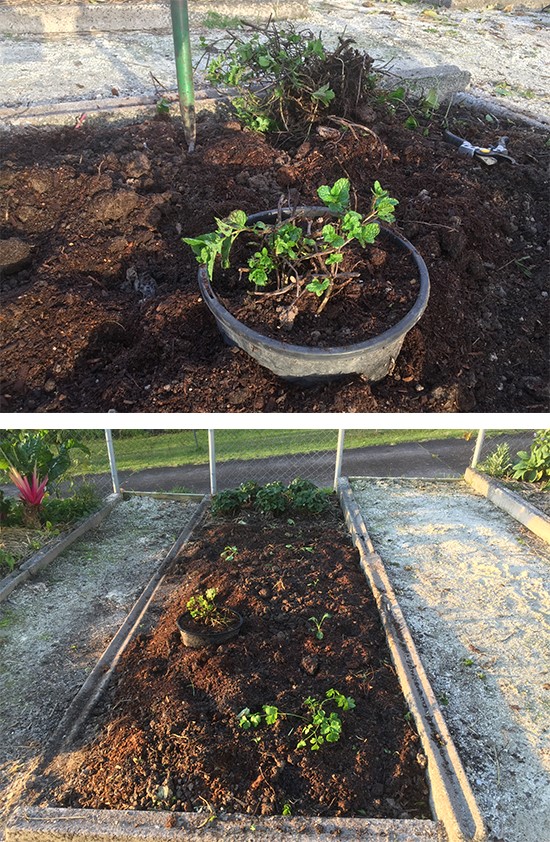My food gardening story this month is all about one thing leading to another.
The first job was harvesting our kumara.

I knew there’d be a lot of foliage from this crop which would begin a new heap for the next compost, so that meant turning the hot compost I made 2 weeks ago which has been nice and toasty to the touch and has scrunched down by half, so as to make room for this new heap.

In this compost I had added, along with our regular ingredients of grass clippings, biomass (spent crops), egg cartons, rock dust and chicken manure, some of our seaweed collected last month and some used coffee grounds from our local café.

It was really quite broken down after two weeks and didn’t need extra water which was great. So I just turned it and covered it again and created a new space for the spent crops to heap up again.

With the space created, I could start the kumara harvest. They’ve been in the ground for over 17 weeks or around 120 days but the foliage was still pretty green.

I tried a little patch at the top and they were definitely big enough so a full harvest got underway. First I cut back all the foliage.

Then with a fork and my hands I dug them out. Rob warned me they would be hugging the concrete edging (I guess for the radiated warmth) and I did manage to put the fork through 3 or 4 of those ones, but the rest were unscathed. It had been raining the night before so the soil was damp and it was quite hard to get them out.

There’s a good haul as you can see, BUT… there are holes in most of them and it looks like this when you cut the tuber open.

Rob and I think it looks like wireworm damage, but none of our other root crops are affected like this which you might expect. If you have any experience of this or solutions, we would love to hear from you.
In the meantime the kumara got laid out to dry and harden off. They should be laid out for at least two dry days, so as the weather has been quite unsettled I’ve had them in and out on a regular basis! I think the damage is not new, so I will give storing a go and just cut round it when preparing the kumara for eating, but it is really disappointing after all this time.

I’ve now wrapped each kumara individually in newspaper and placed them in a wire basket in our semi-outdoor cupboard to store.

If it is wireworm damage, then I see Kay Baxter suggests planting a mustard cover crop afterwards as it has biofumigant characteristics. But as mustard is a brassica that means you can’t plant brassicas in this bed next as brassicas can infect the soil with club root disease.
Also I want to use this bed that they came out of for my long-term leafy greens. Crop rotation is a good measure for heading off wireworm so that’s a positive.
So into the old kumara bed I added compost (bought as I didn’t have enough of our own), then chicken manure (nitrogen for leafy greens) and some rock dust (Natures Organic Fertiliser). Using a fork and a wig-wag motion I mixed it all in.

In went one parsley plant (I’ve got 2 more coming along as well as some cutting celery but they’re not big enough yet), 2 cavolo nero kale plants and 2 silverbeet.

And I transplanted the mint from the summer bed. It’s planted in a pot with the bottom cut out to contain its spreading habit. I knocked it out of the pot, cut a quarter off the plant with the spade, inserted the pot in the bed and planted the quarter piece in that.


Everything got a good watering in. Then I applied a bag of neem granules which is an excellent soil conditioner in an attempt to ward off wireworm and settled in a pottle of yeast mixture to deter the slugs and snails.

I’ll leave the current long-term leafy green bed in till these new guys get some growth on them. There’s lovely parsley and silverbeet in the old bed that we still want to eat, then a green manure crop will go into this bed to give the hardworking soil some invigoration.

The next job was to thin out the root crops and transplant some of the beetroot seedlings using our dibber. We had a good strike even though a cricket had nibbled some of the carrot seedlings. The yeast trap didn’t catch the cricket but it put it off (I saw one and I think it was a lone operator). I’ve left the spring onions intact as they don’t get very big and can push each other round to make space.

And lastly I’m applying liquid seaweed at the beginning of each month to all our beds as simply good practice. I dilute it by half. It is a bit stinky for a day but it’s a natural smell and the neighbours haven’t complained yet!

Our brassicas all look healthy. All I’m doing is hilling them up when I see them getting a lean on and keeping an eye out for slugs and snails.

And the Florence fennel and the last of the oak leaf lettuces get top marks this month.

I’ll plant out the last lot of brassica seedlings (which are coming along nicely on the windowsill) in the New Moon of this month and sow some more carrots in the Full Moon phase. Then I can put my feet up and start browsing catalogues for some interesting tomato varieties for summer, as we hurtle towards the shortest day of the year.
Enjoy your garden in June!
From Jan, Rob and the Team at OEG!
Website designed by www.thecornerstorecollective.com
Developed by Richard Hpa